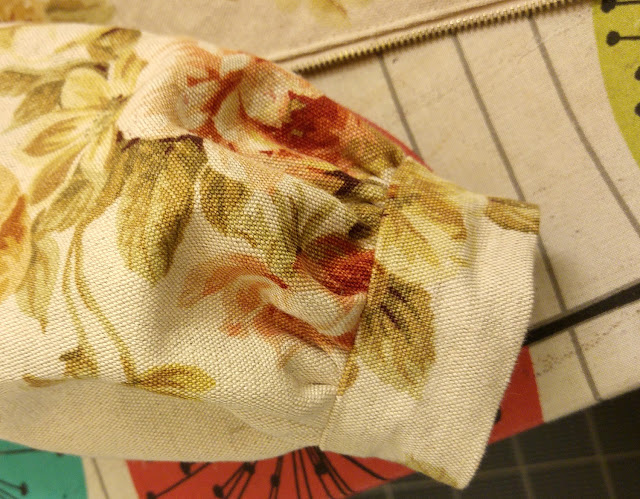this is a tutorial on how to make a very easy shirt like this:
It's basically just two seams and adding cuffs to the neckline, hem and sleeves. And no pattern required; you'll be making your own!
So, to make this type of shirt, you'll need:
- A piece of jersey/stretchy fabric that's twice as long as you want your shirt to be and as wide as the measurement from wrist-to-wrist (with your arms stretched out to the sides), plus maybe some extra for the cuffs (although most likely you'll be able to cut the cuffs from the pieces left over after cutting the shirt piece out).
- A serger or a sewing machine with zigzag/stretch stitch
- A shirt that fits you. It's a bonus if the sleeves of the shirt are dolman or batwing type (they go relatively straight to the sides and don't slope down too much), but it doesn't really matter.
- Some paper to trace your shirt on
Take your shirt and fold it in half onto the paper.
If you want to make the new shirt longer or shorter, adjust the length. I made my new shirt waist-length. When tracing, you want the sleeves to go straight to the sides, so the angle is 90 degrees:
If the sleeves of your original shirt slope down, just draw the line straight to the side and measure the width of your sleeve downward from that, like this:
Draw the shirt to the length you want it to fall. We're snipping the cuffs off after drawing. Draw the neckline as big as you want it in the end, following the finished neckline of your original shirt or making the neckline smaller or bigger if you like. Usually the neckline is lower at the front, but I made mine a boat-neck so it's identical on both sides. You can make the neckline the way you want; you just need to make a separate pattern for the front and back neckline and neckline cuffs if this is the case.
Here I've marked the cuffs into the traced shirt:
Then cut out your shirt pattern:
Fold your fabric half length-wise AND width-wise so you have four layers of fabric. Place your pattern on fold:
Then simply cut the shirt piece out. Don't cut any of the folded edges, just cut the neckline out of the corner and then along the hem, side and underarm. Leave some seam allowance as you cut so you don't end up with a shirt that's too tight.
Cut the cuffs. Cut 2 of each on fold on two sides just like the shirt piece.
Now, if your neckline is lower at the front, you need to make the neckline cuff from two pieces and sew the front and back neckline cuffs together at the shoulders to make them into circles. If you cut the necklines with shoulder seams, cut two of the back and two of the front.
Once you have all your pieces cut, it's time to get sewing!
If you spread out your shirt piece, it looks like this:
Sew the cuffs into loops.
For the sleeve and hem cuffs, fold them in half so the wrong sides are inward and raw edges meet. For the neck cuff also fold it so wrong sides are together (you probably need to iron it so it stays like that).
Next, fold the shirt right sides together length-wise and sew the side / underarm seams.
Turn the shirt right side out and attach cuffs like so:
Do the same for the neck cuff. It's a bit more difficult because it is narrower toward the center, but as the center stretches it's not impossible.
And the shirt is done!
You can leave it simple or add something decorative. I added this iron-on embroidery patch.
I hope you find this tutorial helpful and if there's anything that was unclear, don't hesitate to ask in the comments; I'll do my best to clarify things.
If you make your own shirt using this tutorial, leave me a comment linking to your creation or tag it on instagram using the hashtag #sewscoundrel :)
Satu / Sew Scoundrel
























































